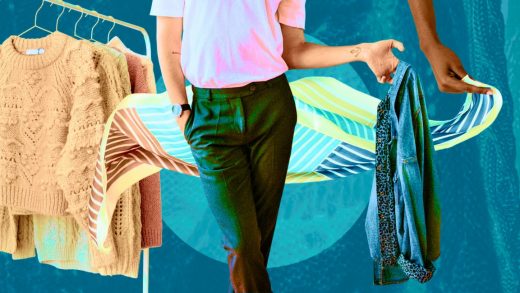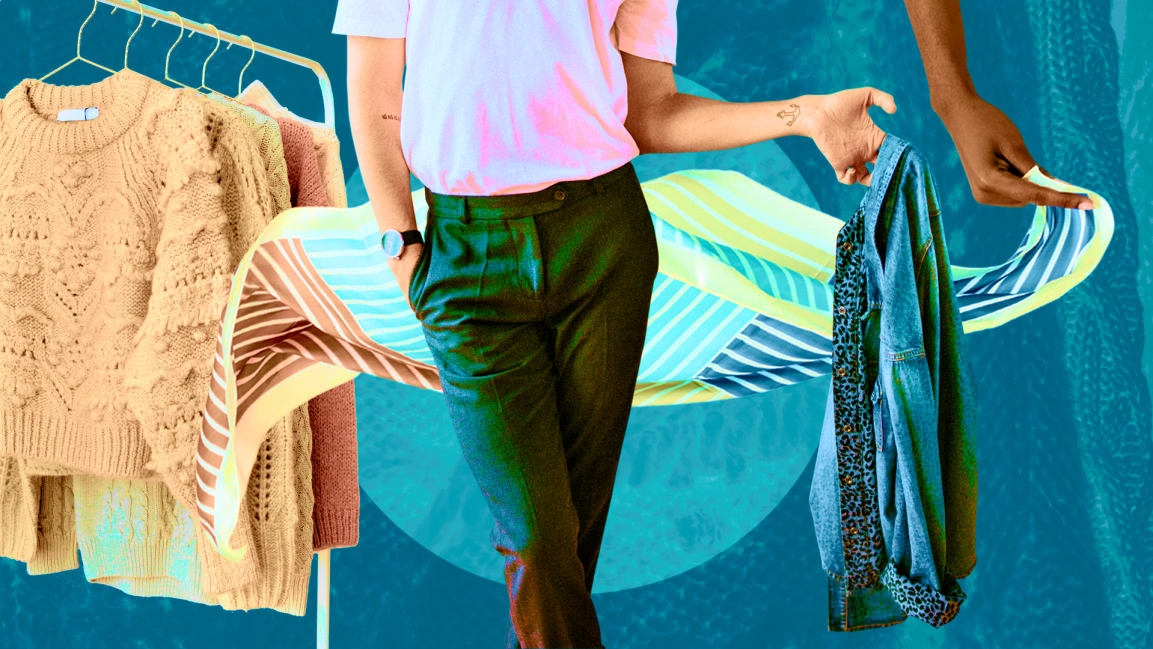The great work wardrobe reckoning
The era of the Zoom top may not, in fact, be ending. As for Zoom pants? Many of those are being replaced with smart jeans.
Workplaces are finally opening to employees who have been home for years, often telling or expecting them to arrive in distinctly more casual clothing. But while dressing down is often described as an enormous and welcome relief, it can be equally stressful, given that many people now have to decide on and acquire a new office look.
“You’d think there’d be some jeans available that didn’t have holes in them,” says a corporate lawyer working in New York. Her firm issued a memo telling employees they can wear denim without rips when they go back around two days a week in March, so long as they change into dressy clothing for client meetings. “It’s really hard to make that switch, because I had a really nice work wardrobe, and my weekend clothes are kind of whatever,” she says. She bought Max Mara coats before the pandemic that she now expects to consign, along with a slew of other dressy things. “Like, how many vintage Chanel blazers do you need?”
The men at her office seem to be having an easier time. “They just all look they’re trying to do that preppy, I-might-go-hunting-this-weekend look—lots of Barbour, Patagonia. With Gucci loafers.”
Based on conversations with around a dozen people going back to work, I’d say fashion companies should be excited right now—a lot of us are shopping—but they should push office jeans and flats, with minimum emphasis on suiting. Some will wear blazers to work, but probably not nearly as many as suggested by all the recent spring 2022 runway shows.
Shama Sadruddin works at a healthcare company in Dallas that also told employees they could return to the office dressed down. Her old workwear of sheath dresses and pencil skirts are in a big bag at the top of her closet, but she doesn’t plan to part with them. The daughter of immigrants, she was the first in her family to have a 9-to-5 job.
“The idea of a shift dress or a pencil skirt represented more than a grown-up job—it means a bit to me, so I’m going to keep them,” says Sadruddin, also founder of the jewelry line Lythe. That said, being able to dress more casually “definitely helps [with] getting into the office right now.”
Companies are in a bind whether or not they choose to issue guidance about what to wear. Prescribing a wardrobe is a loaded proposition that many workers see as infantilizing (can’t adults just decide when to wear jeans?) But a memo at least takes some guesswork out of it. One woman working at a cosmetics company in New York that didn’t issue one says that she and her colleagues were asking each other on group calls what they’d be wearing.
“I thought everyone was on the flats game, and then I come in, and everyone’s got heels on. Like, aren’t loser commuter shoes back?” she wonders.
They are for women like Rachel Finkelstein, who works for a credit card company and is “avoiding heels at all costs” in favor of loafers and sneakers. She wore heels every day before the pandemic, and when I ask if her feet feel better having not worn them since, she replied, “Yes, oh my gosh—I wear slippers every day.” That said, “I am suddenly panic shopping. Not only am I used to wearing sweatpants all day, but I’m very sure my jeans don’t fit me anymore after sitting on my butt for two years.”
Many people will only work in an office a few days a week, meaning they don’t need as many work clothes as they once did. But the pandemic had already led people like Sarah Zeitler to reconsider how much clothing is really necessary. She works for a conservative manufacturing company in Pennsylvania, and the office has turned casual.
“I didn’t put on a jacket. I didn’t feel the need to put on pearl earrings and a low bun and look super washed-out. I would have 100 percent felt the need to dress that way pre-COVID,” she says. “People would have worn black pants from Banana Republic and a tucked-in blouse and been really blooming uncomfortable all blooming day.”
She started a capsule wardrobe of 33 pieces using the 333 method. “I have not touched 75 percent of my closet and I still have options,” she says. Now that she’s going to work in Athleta pants and sneakers, she plans to consign old clothes she’s relegated to a Rubber Maid.
Meanwhile, in St. Louis, Missouri, Christine Iovaldi, who works for Dot Foods, says she had also edited a whole genre out of her wardrobe. “I don’t have any in-between clothes anymore. I just have work clothes or working out clothes,” she says.
For others, the pandemic brought along new lines of work mandating new work wardrobes entirely. In Pittsburgh, Aaron Valentic started as a medical case manager and digital content coordinator for Central Outreach Wellness Center in 2020 after getting laid off from a fashion job. Now, he wears scrubs every day, though he can mix up his accessories.
“I’m on the border of Millennial and Gen Z. Everyone’s doing resale. So a lot of people my age and younger are not interested in going to department stores,” he says. “I’ll buy something that’s more expensive, but it’s not going to have a logo. I want something that is going to last.”
Ambika Singh runs the clothing rental company Armoire out of Seattle, which has been collecting customer reviews of all its pieces since starting five years ago. Given many of her customers have been home-bound for so long, she says they now see every leave-the-house opportunity as a “micro-event.”
“The things we’re seeing pop are bright colors, patterns—something we’re not seeing pop is, like, the pencil skirt,” she says, noting that demand for “career pants” has fallen by half. “Our data would concur that the focus on comfort is very real.”
When we spoke, she had just had a micro event of her own: an alfresco lunch date with a coworker. “Before the pandemic, both of us wouldn’t have showered. But now I’m like, I’m having lunch!” she says. “It is exciting to leave home.”
Amy Odell is the author of ANNA: The Biography, which comes out in May from Gallery Books.
Fast Company , Read Full Story
(21)



